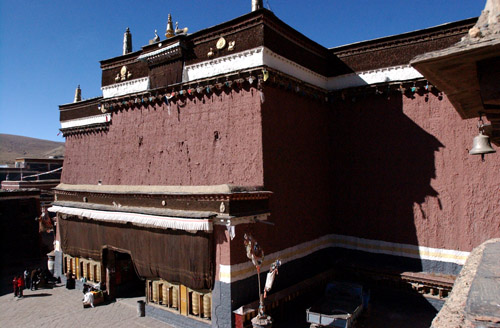Sajia Temple
 0 Comment(s)
0 Comment(s) Print
Print E-mail China.org.cn, April 9, 2012
E-mail China.org.cn, April 9, 2012
|
|
|
Sajia Temple [beijingreview.com.cn] |
- Location: Sajia County, Tibet Autonomous Region
Located on Benbo Mountain, Sajia County, Tibet Autonomous Region, Sajia Temple (薩迦寺) is the main temple of the Sajia section of Tibetan Buddhism. Sajia Monastery is famous because of its gray-white soil. In Tibetan language, Sajia means "gray soil". It was built in 1073 in the Northern Song Dynasty by a local nobleman.
Since it is divided into two parts by the Zhongqu River, it is called South Sajia Temple and North Sajia Temple and consists of more than 40 buildings. The construction of Sajia Monastery features a unique architectural style. The South Sajia Temple covers an area of 14760 square meters and the main hall covers an area of 5775 square meters. It looks like a defensive wall in the Han architectural style.
Sajia Temple has long played an important role in history, and it is home to historical records, Buddhist sculpture, ancient clothing, frescos and more than 3,000 items of thang-kas (painted or embroidered Buddhist banners).
Travel tips:
- Hours: 9 a.m. – 6:30 p.m.
- Admission: 50 yuan
- How to get there: take a bus at the Xigaze Bus Station (tickets cost 45 yuan/person.)






